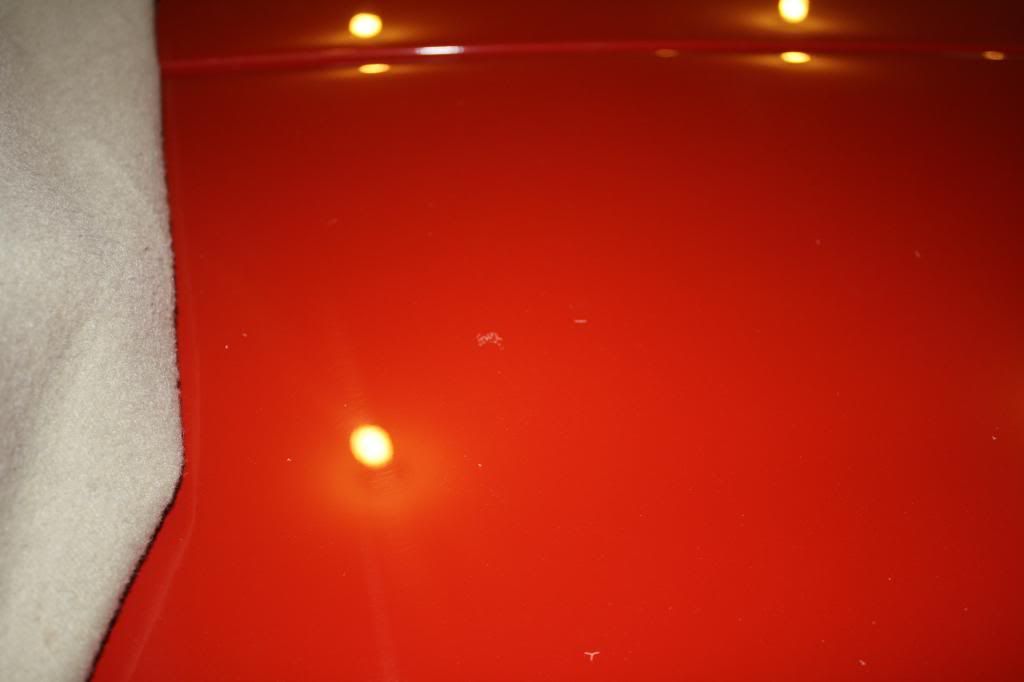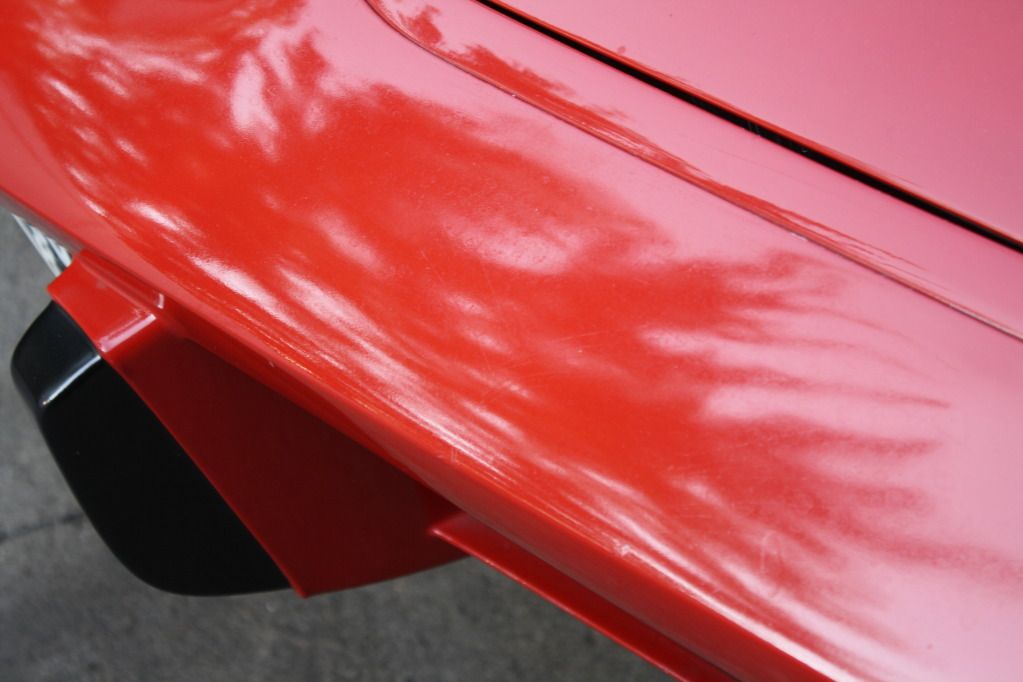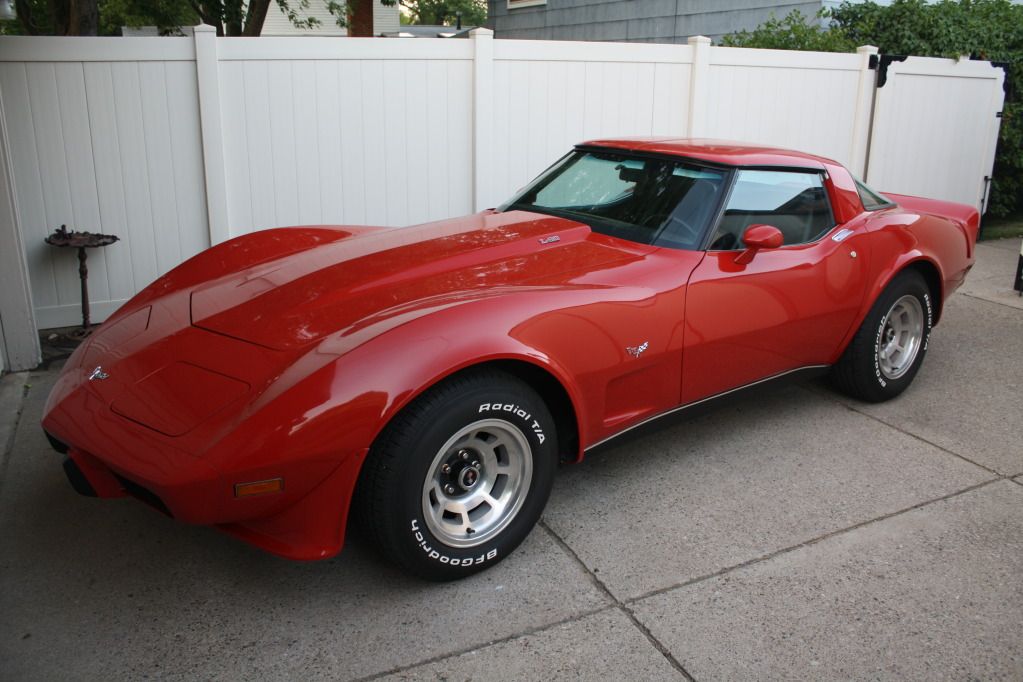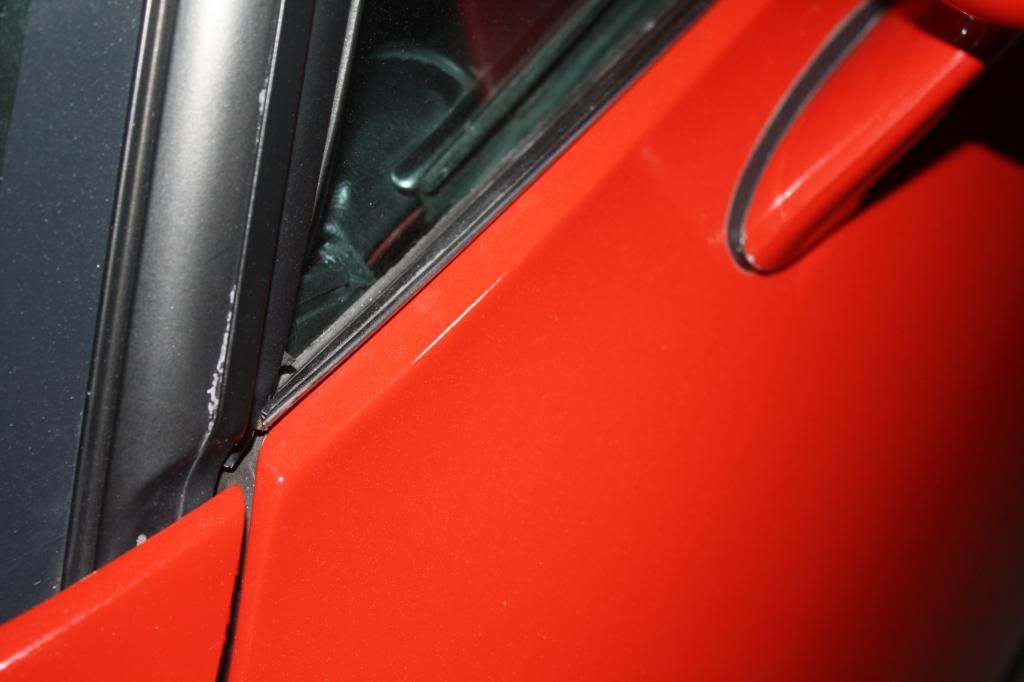Can wet sanding /buffing lead to spider web cracks?
#1
Hello
I have a 1979 L82 Corvette, Red with non original paint... the paint still looks decent although it has become duller and has a bit of oxidation in it.
Currently the car is at my fathers house, where it can be stored inside for the winter, while I live a few hundred miles away. He is now retired so I asked him if he could take it to a body shop to see if they could rub the paint out. The body shop decided the best place to test the rubbing compound would be square in the center of my hood. Now this area of the car came out okay, so now I have a 1'x1' smooth portion of the hood while everything else looks old. They proceeded to then finish off the T-tops of the car and then called it a day. Now when I got home, I reviewed the T tops and I found tiny spider cracks formed on them. Now my question is can wet sanding and polishing corvettes lead to spider web cracks? Or did I just miss these cracks until after I was closely inspecting their work?
My main concern is if I give them the go ahead to finish the car, they will end up making is a giant mess and it will need to be repainted all over again (and I purposely bought this car because it didn't need to be painted). However, if I don't repaint the car, I am stuck with a 1x1 foot patch of altered paint on the hood.
Can you guys please give me your best advice on how to move forward?
Thank you all,
Miller
EDIT Added Picture, you can see the small spider crack on the bottom and the cluster of white dots 1 o'clock from the light's reflection.

I have a 1979 L82 Corvette, Red with non original paint... the paint still looks decent although it has become duller and has a bit of oxidation in it.
Currently the car is at my fathers house, where it can be stored inside for the winter, while I live a few hundred miles away. He is now retired so I asked him if he could take it to a body shop to see if they could rub the paint out. The body shop decided the best place to test the rubbing compound would be square in the center of my hood. Now this area of the car came out okay, so now I have a 1'x1' smooth portion of the hood while everything else looks old. They proceeded to then finish off the T-tops of the car and then called it a day. Now when I got home, I reviewed the T tops and I found tiny spider cracks formed on them. Now my question is can wet sanding and polishing corvettes lead to spider web cracks? Or did I just miss these cracks until after I was closely inspecting their work?
My main concern is if I give them the go ahead to finish the car, they will end up making is a giant mess and it will need to be repainted all over again (and I purposely bought this car because it didn't need to be painted). However, if I don't repaint the car, I am stuck with a 1x1 foot patch of altered paint on the hood.
Can you guys please give me your best advice on how to move forward?
Thank you all,
Miller
EDIT Added Picture, you can see the small spider crack on the bottom and the cluster of white dots 1 o'clock from the light's reflection.

Last edited by miller3; 12-28-2012 at 03:19 PM.
#3
Melting Slicks


I agree that they were there prior to the buffing and just were not that visible with the dull paint.
I would go ahead and buff out the rest. It may just be the tops that are cracked and you could just get away with painting them.
I would go ahead and buff out the rest. It may just be the tops that are cracked and you could just get away with painting them.
#4
Melting Slicks


#6
Team Owner


It's possible, if you buffed too heavily or for too long in one area. You don't want to 'work' the surface so that it gains heat. If it does, depending on the type and age of the paint, it can create cracking in the surface.
#7
Melting Slicks


Rotary buffers and compound work by friction which generates heat... but the surface temp should not exceed that generated on a midsummer afternoon parked in Walmart's lot in the full sun. The spiders were there before it was buffed... the now smooth and shiny surface highlighted them. I would have the car totally polished, then you can judge whether it really needed paint when you bought it or not, and experiment with probably a "wax as you dry" type liquid wax or glaze to keep it shiny but not fill the cracks with a visible residue. I agree; it's a bit late to stop now as it will look like crap unfinished.
#8
Rotary buffers and compound work by friction which generates heat... but the surface temp should not exceed that generated on a midsummer afternoon parked in Walmart's lot in the full sun. The spiders were there before it was buffed... the now smooth and shiny surface highlighted them. I would have the car totally polished, then you can judge whether it really needed paint when you bought it or not, and experiment with probably a "wax as you dry" type liquid wax or glaze to keep it shiny but not fill the cracks with a visible residue. I agree; it's a bit late to stop now as it will look like crap unfinished.
Here is a small area that I am talking about on the front bumper I worry that these will all of a sudden come out as cracks

I was currently trying to decide if I should
A) try to blend the spot on the hood
B)finish the hood and see how bad it comes out, and possibly just clay barring and waxing the rest
C)after checking the hood, proceed with the rest of the car
I really appreciate everyone's help. I just want to make sure car stays as good as it can. It is one of the more unmolested corvettes I have ever seen. I plan on polishing up the engine bay and repainting the valve covers and air cleaner.
Heres a couple photos of the little girl, not bad for 43,000 miles.



#11
Instructor


Turtle wax makes a polish that comes in red, black or silver. Most polishes leave a white residue and it really magnified everything on my black car. The black polish really blends in the minor imperfections. It also doesn't show up in the crevices around lights and other places like white polish does.
#12
Melting Slicks


Try washing the tops with either an old fashioned wash mitt or a brand new all cotton terrycloth facecloth and some car wash detergent; not dish soap. Microfiber cloths tend to be too smooth to get into crevices etc. If the white disappears after you dry it, the residues were to blame. There should be no white undercoats on a red paint job, especially if it came from the factory. Then use only liquid waxes/polishes to maintain so as not to redeposit white gunk.
It is my opinion from looking hard at your closeup pics that the car has been repainted at least the front bumper cover. I see surface faults which were imperfectly feathered or filled in prep for the current topcoat. Hate to say this, but if those surface imperfections bother you badly the only cure will be to strip the car bare and repaint. Those spiders will slowly grow in size as the paint continues to age, but only you can decide when it NEEDS to be addressed.
It is my opinion from looking hard at your closeup pics that the car has been repainted at least the front bumper cover. I see surface faults which were imperfectly feathered or filled in prep for the current topcoat. Hate to say this, but if those surface imperfections bother you badly the only cure will be to strip the car bare and repaint. Those spiders will slowly grow in size as the paint continues to age, but only you can decide when it NEEDS to be addressed.
#13
Try washing the tops with either an old fashioned wash mitt or a brand new all cotton terrycloth facecloth and some car wash detergent; not dish soap. Microfiber cloths tend to be too smooth to get into crevices etc. If the white disappears after you dry it, the residues were to blame. There should be no white undercoats on a red paint job, especially if it came from the factory. Then use only liquid waxes/polishes to maintain so as not to redeposit white gunk.
It is my opinion from looking hard at your closeup pics that the car has been repainted at least the front bumper cover. I see surface faults which were imperfectly feathered or filled in prep for the current topcoat. Hate to say this, but if those surface imperfections bother you badly the only cure will be to strip the car bare and repaint. Those spiders will slowly grow in size as the paint continues to age, but only you can decide when it NEEDS to be addressed.
It is my opinion from looking hard at your closeup pics that the car has been repainted at least the front bumper cover. I see surface faults which were imperfectly feathered or filled in prep for the current topcoat. Hate to say this, but if those surface imperfections bother you badly the only cure will be to strip the car bare and repaint. Those spiders will slowly grow in size as the paint continues to age, but only you can decide when it NEEDS to be addressed.

Also, as far as the undercoat is concerned, there is where it looks like the paint was worn down right in front of the drivers mirror (maybe I am wrong, is there another reason for how this formed)? From the picture, does it look like the under coat is actually a white? I know this car was painted before because the body shop said that no color came off when they wet sanded (and if I understand correctly, factory paint was a one step and didn't have a clear coat.)

Last edited by miller3; 12-29-2012 at 12:30 PM.
#14
Team Owner


If that area in front of the mirror was not like that before the wet sanding, the shop overdid it. Whoever did the sanding didn't take care to not put much work into the body lines (raised edges). The result is that they sanded completely through the top coat.
In that case, the shop owes you a repair in those areas....AT THEIR EXPENSE. If you have any photos of those areas on your car before their work, take them in with you when you "discuss" this problem.
In that case, the shop owes you a repair in those areas....AT THEIR EXPENSE. If you have any photos of those areas on your car before their work, take them in with you when you "discuss" this problem.
#15
If that area in front of the mirror was not like that before the wet sanding, the shop overdid it. Whoever did the sanding didn't take care to not put much work into the body lines (raised edges). The result is that they sanded completely through the top coat.
In that case, the shop owes you a repair in those areas....AT THEIR EXPENSE. If you have any photos of those areas on your car before their work, take them in with you when you "discuss" this problem.
In that case, the shop owes you a repair in those areas....AT THEIR EXPENSE. If you have any photos of those areas on your car before their work, take them in with you when you "discuss" this problem.








